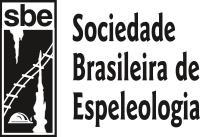Cave bats from the Distrito Federal area in Mid-Western Brazil (Mammalia, Chiroptera)
Na região do Distrito Federal, a fauna de morcegos cavernícolas é pouco conhecida.
A área de estudo está compreendida, em grande parte, no território do Distrito Federal (15°30′-16°03 ‘S; 47°25’-48°12’W; cerca 1.200 m de altitude; área de 5.783 km2 ), situado no Planalto Central, centro-oeste do Brasil. As cavidades naturais estudadas estão concentradas na área norte do Distrito Federal; apenas três delas (Gruta Morro, Toca da Gameleira e Gruta das Orquídeas) estão localizadas em Goiás, município de Padre Bernardo.
No presente trabalho, estudamos as espécies de morcegos que foram capturadas em 20.cavernas da região do Distrito Federal. Analisamos a freqüência de ocorrência, distribuição dos morcegos no interior das cavidades, composição sexual, estágio reprodutivo, épocas do ano de ocorrência nos abrigos e coabitação com outras espécies de morcegos. Finalmente tecemos algumas considerações sobre a conservação das cavernas e das espécies de morcegos da região do Distrito Federal.
Between 1989 and 1995, twenty caves in the Distrito Federal area in mid-western Brazil were assessed for bat species richness, frequency, spatial distribution, behavior, reproduction and inter-specific cohabitation. The general state of conservation of the caves was also assessed. of the 20 caves studied, 12 were less than 100 m long, five between 100 m and 300 m, and three were longerthan 300 m. Twenty-two species of six different families were observed: 16 species belonged to Phyllostomidae, two to Vespertilionidae and Mormoopidae and one to Furipteridae and Emballonuridae. In this study, 17 species were characterized as Distrito Federal cave dwellers. The most prevalent were Desmodus rotundus, Glossophaga soricina and Carollia perspicillata. The least prevalent were Lonchorhina aurita, Pteronotus gymnonotus and Phylloderma stenops. Since some Anoura caudifer, Platyrrhinus lineatus, Myotis nigricans, Micronycteris minuta, and Eptesicus brasiliensis individuals were captured only while going into the caves early in the night, they were not considered cave dwellers. Even though, they probably use the caves as a daytime roosting place. Surprisingly, Lonchophylla dekeyseri, considered to be the only endemic bat species in the Cerrado ecosystem, was observed in three of the surveyed caves. Further biological studies are necessary to determine the biology of L. dekeyseri and the necessity of its conservation. The bat colonies observed were usually of a small size. Few colonies of D. rotundus and Anoura geoffroyi contained more than 300 individuals of both sexes. Only a inale group of L. aurita was observed in the Distrito Federal area. Twelve of the surveyed caves were hard to access and therefore well protected. Four of the caves received some public visitation, two were located near limestone mines, one was located near an urban area. and one had both public visitation and deforestation near its entrance. In this latter cave, no bats were observed after november 1994, probably due to the urbanization process. Special attention should be given to eight of the surveyed caves in any plan made for the conservation of cave bats in the Distrito Federal area. These caves host a high bat diversity (six or more species) and also shelter two rare and one endemic bat species.
Bredt, Angelika; Uieda, Wilson; Magalhães, Edvard Dias. Morcegos cavernícolas da região do Distrito Federal, centro-oeste do Brasil (Mammalia, Chiroptera). Revista Brasileira de Zoologia. Sociedade Brasileira de Zoologia, v. 16, n. 3, p. 731-770, 1999.
